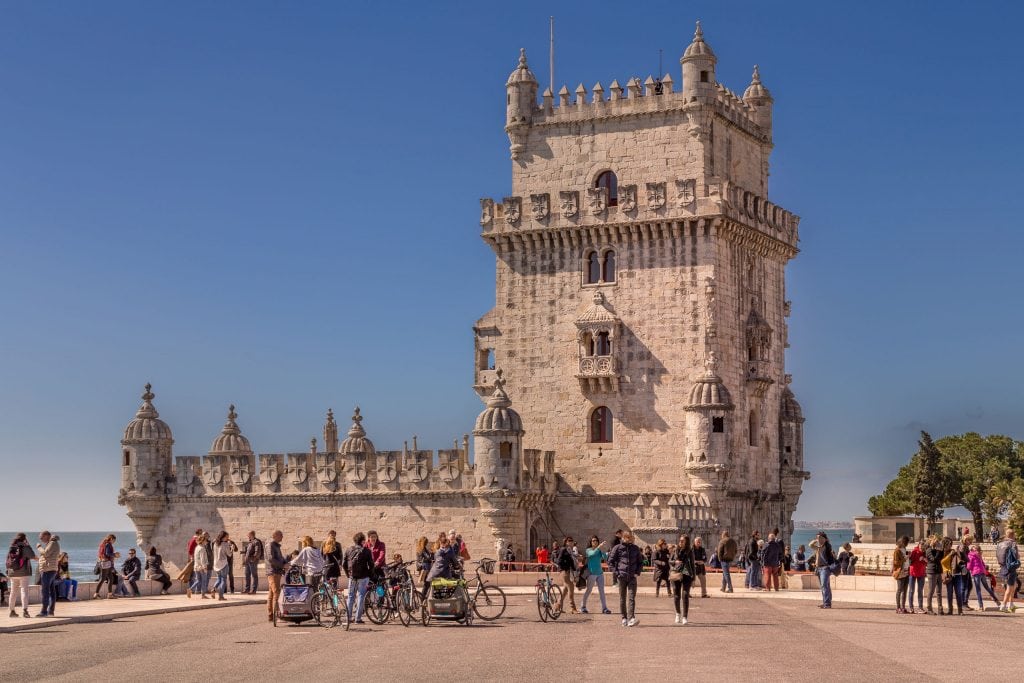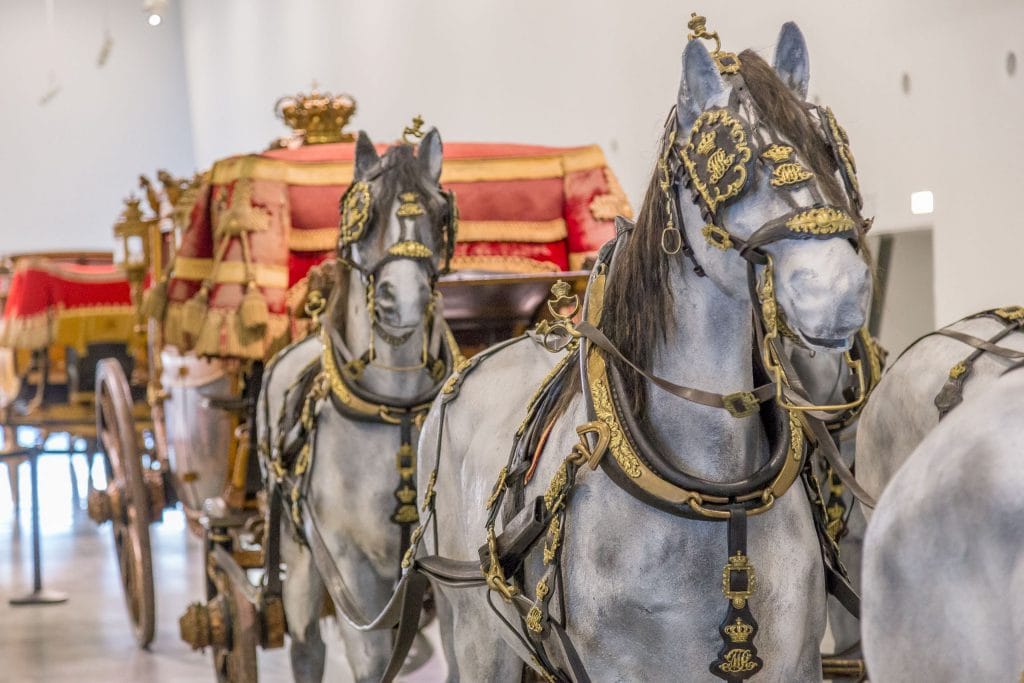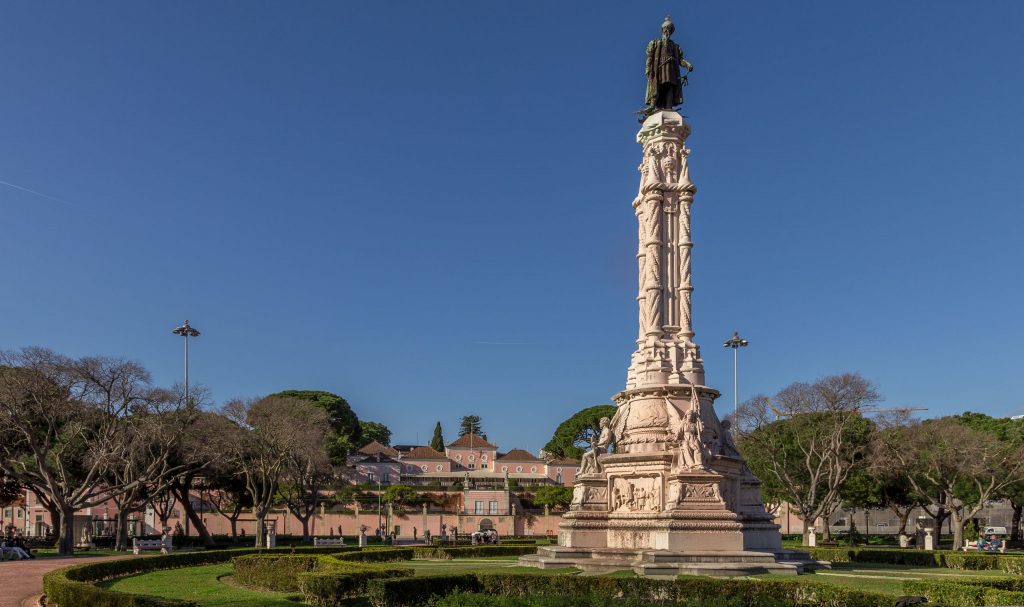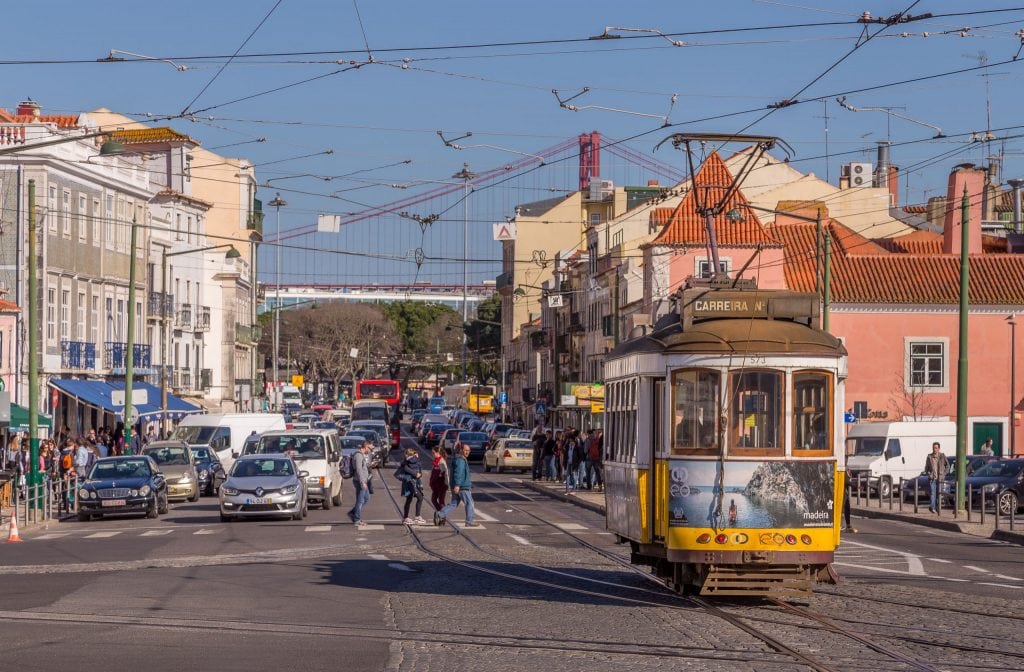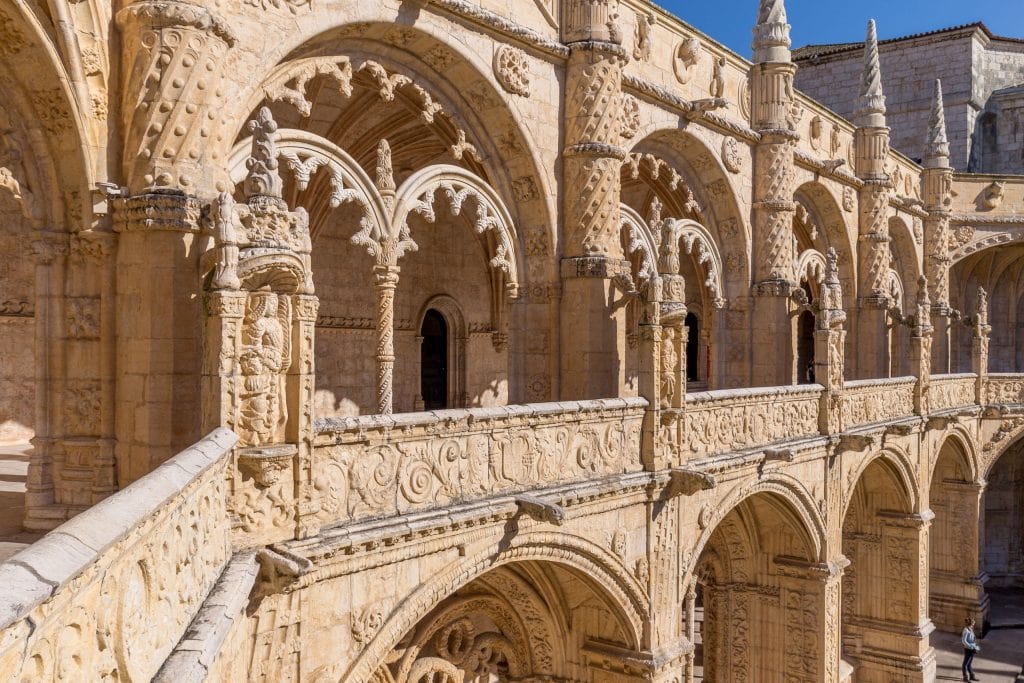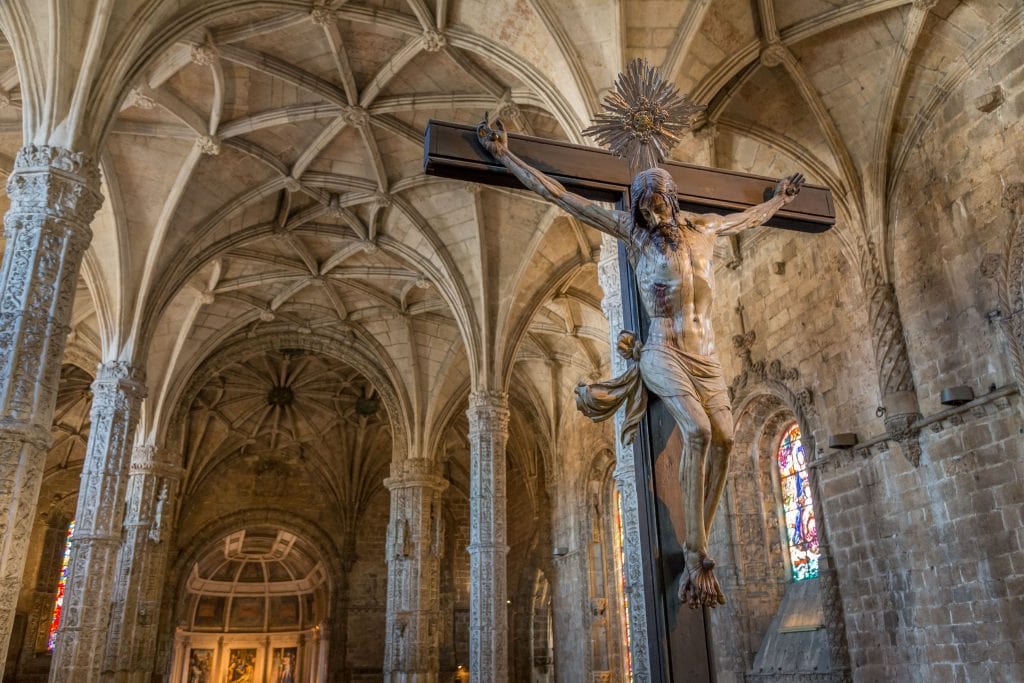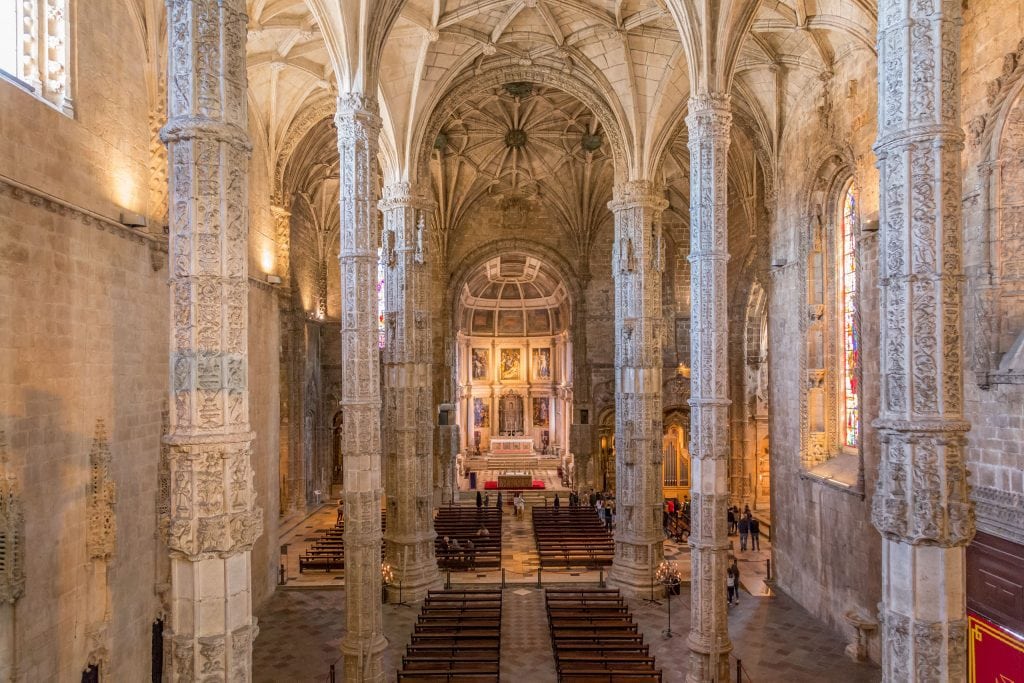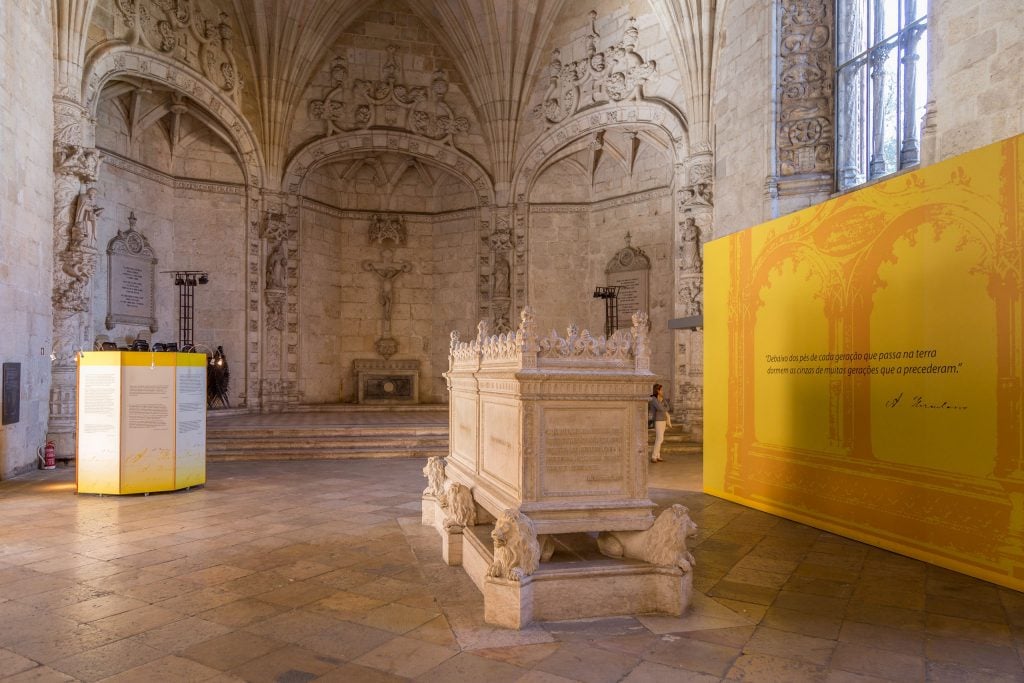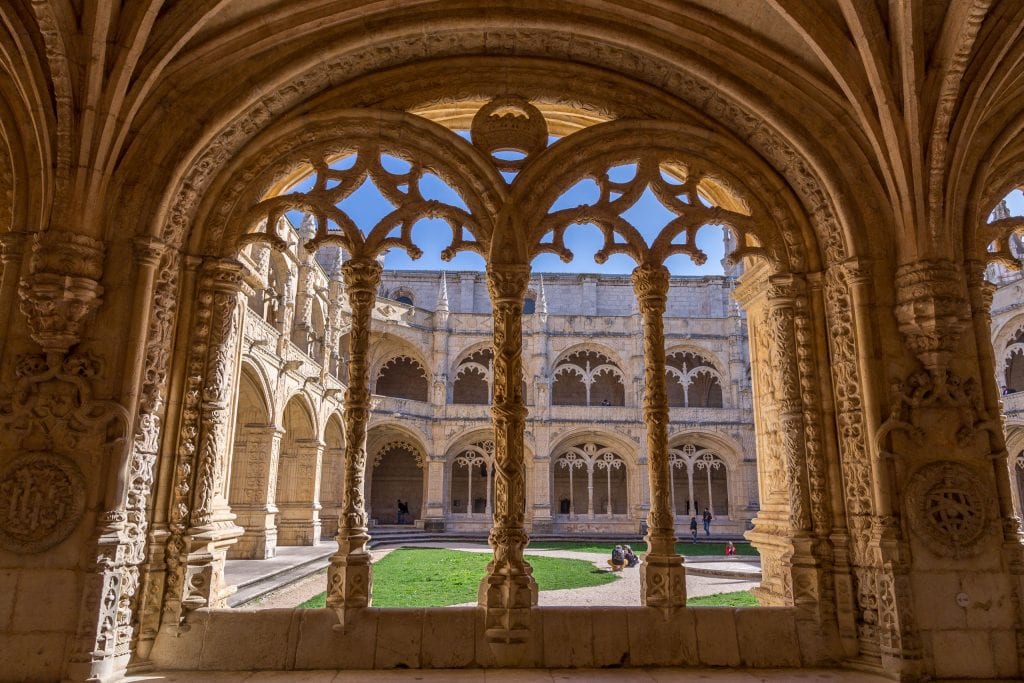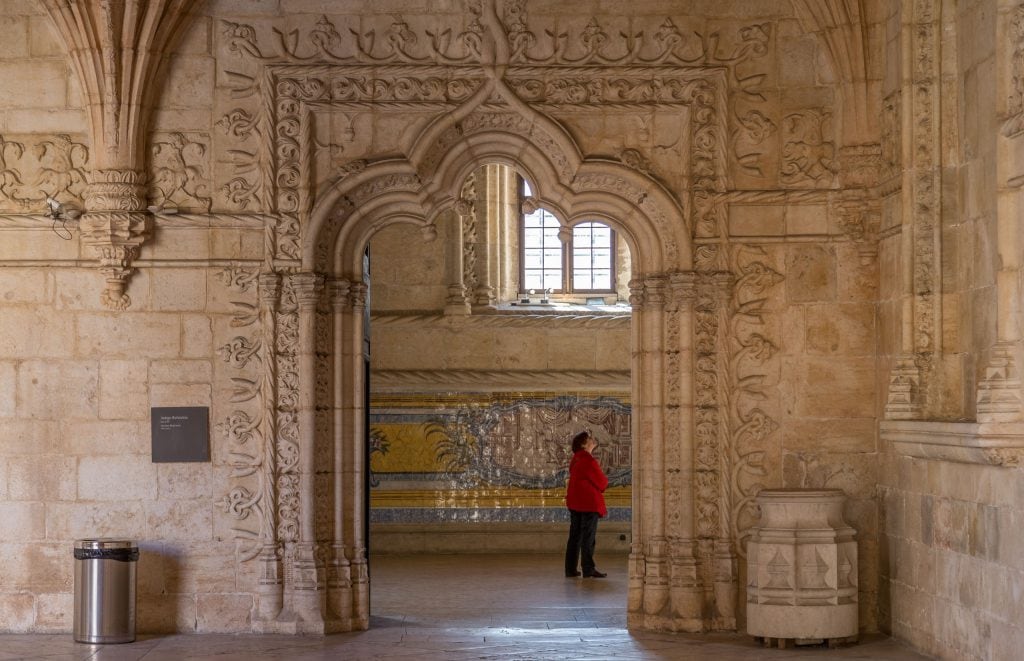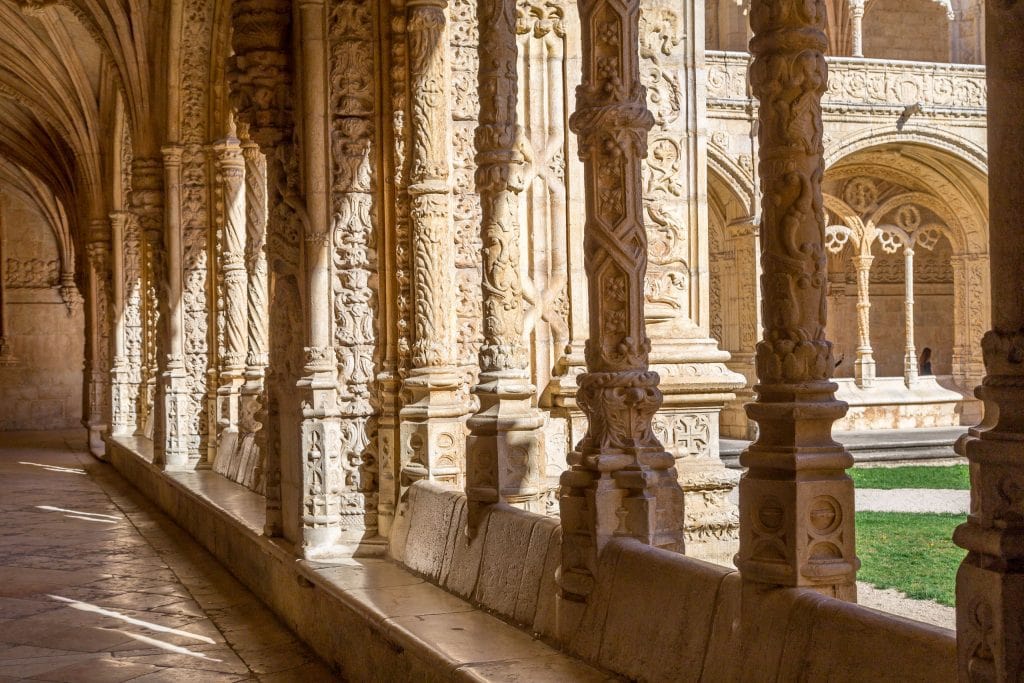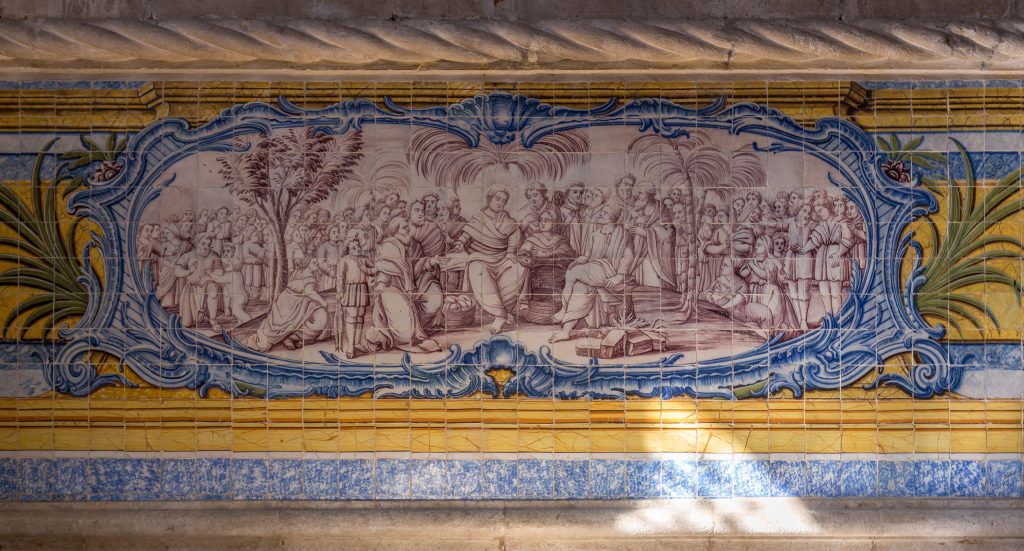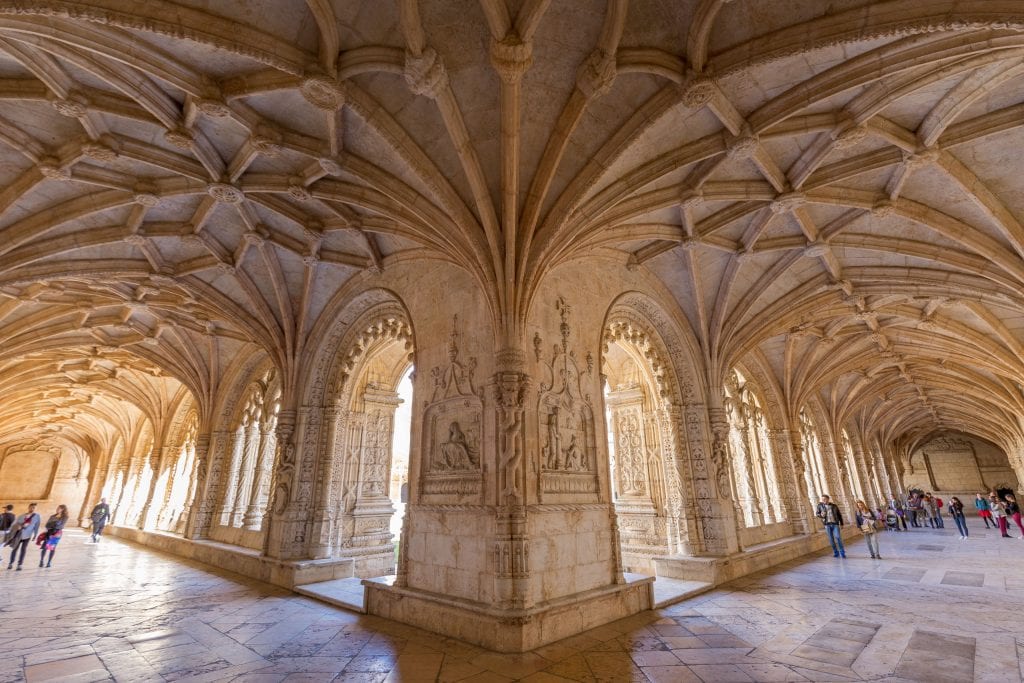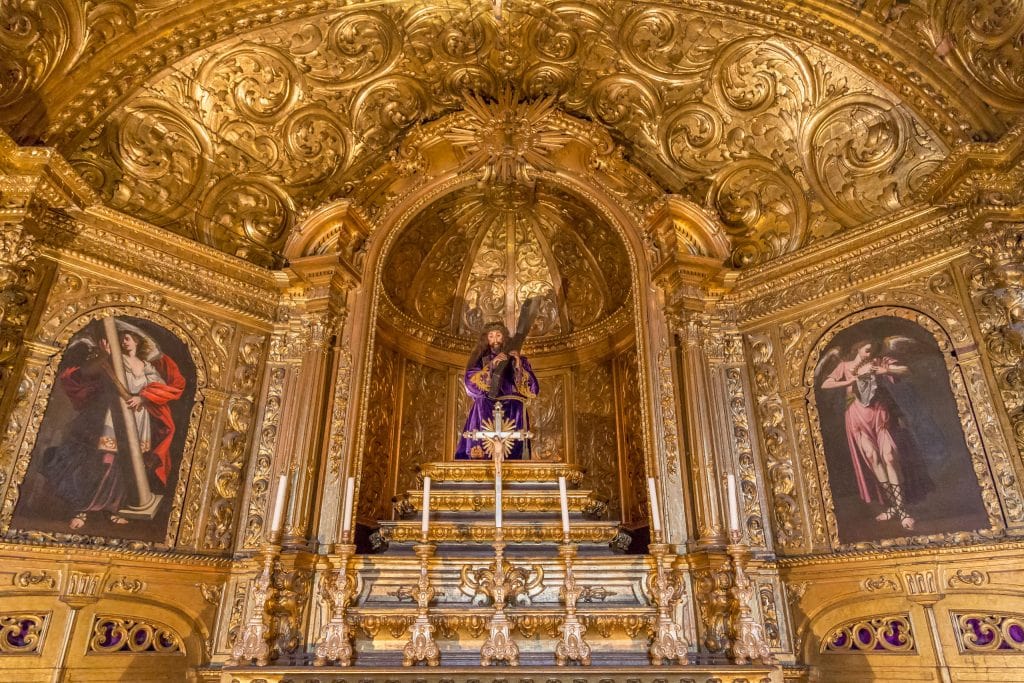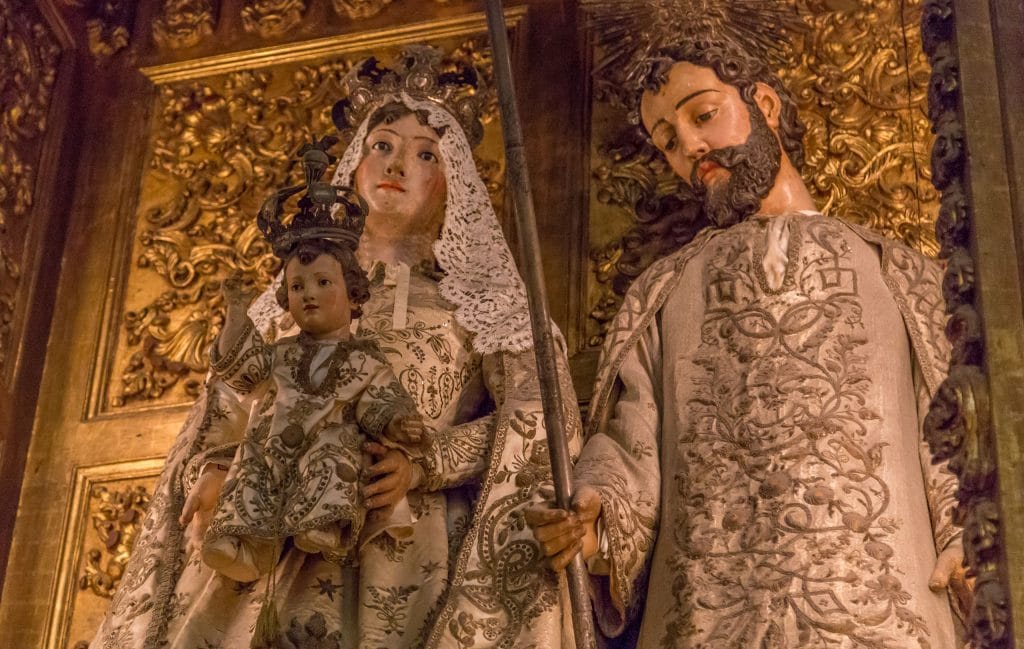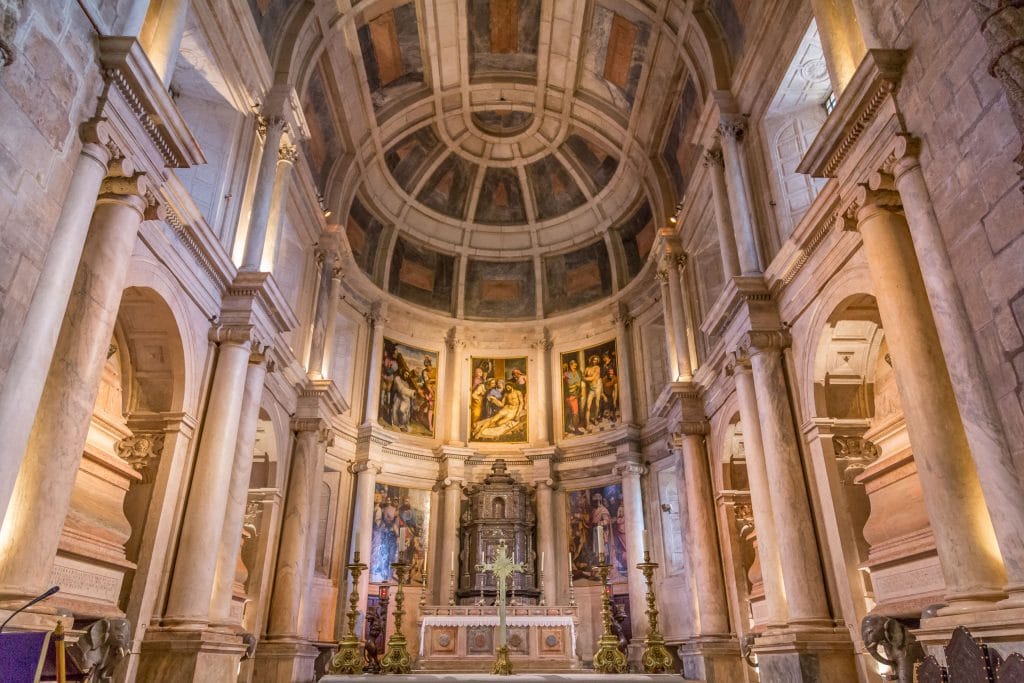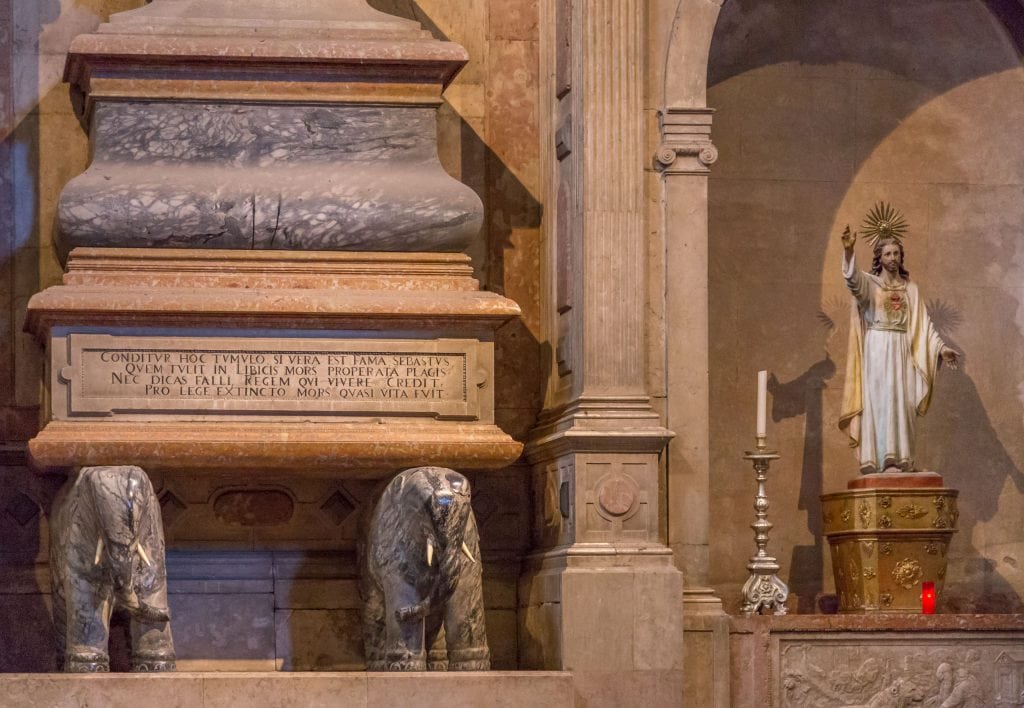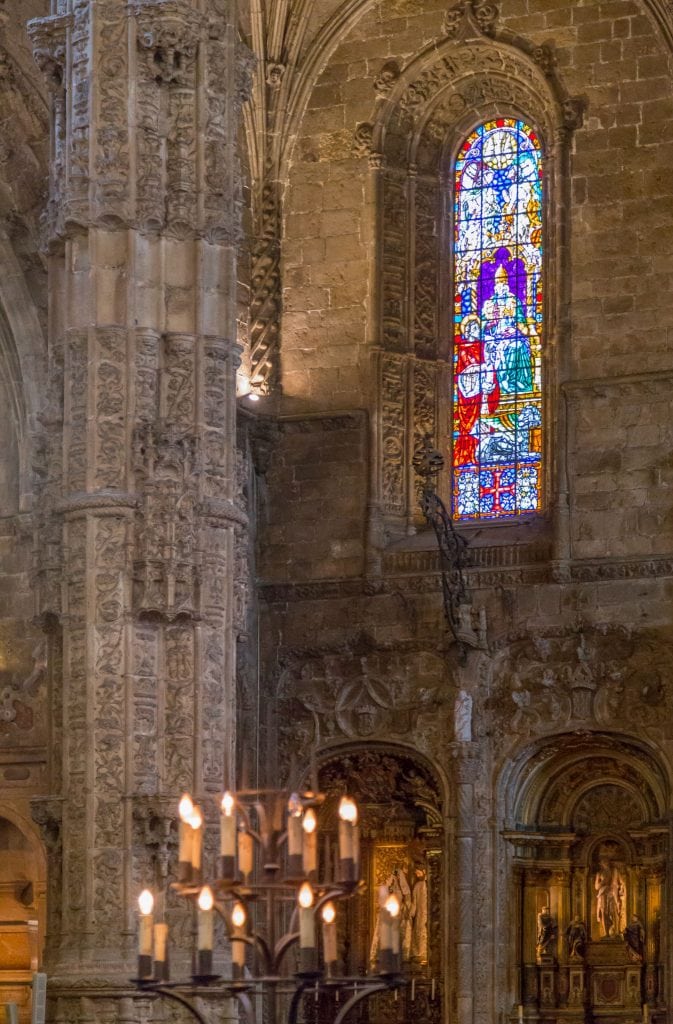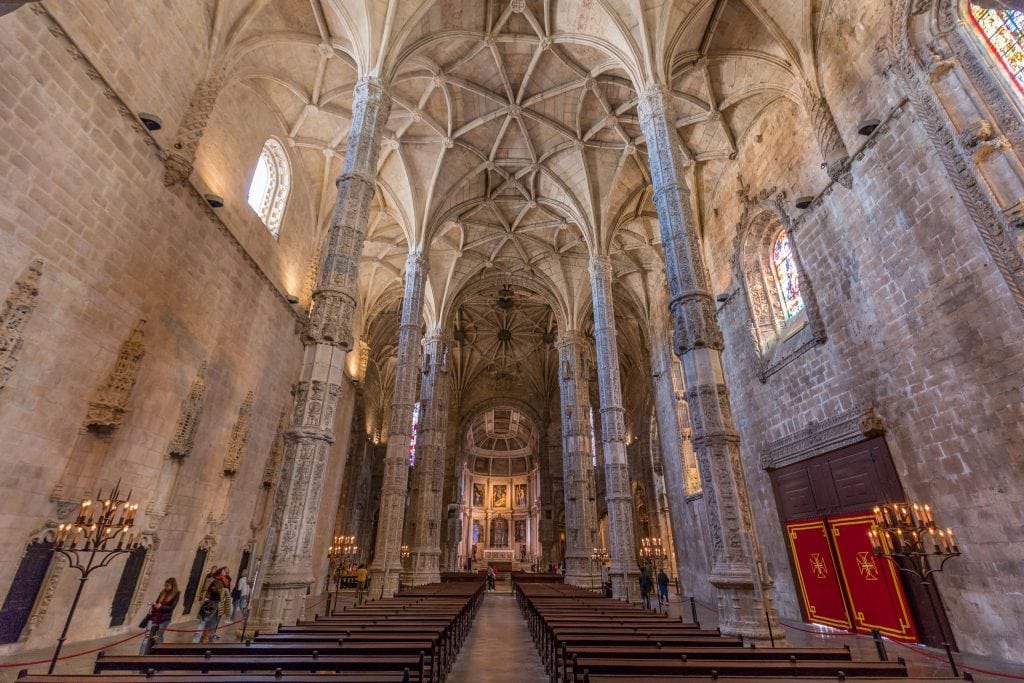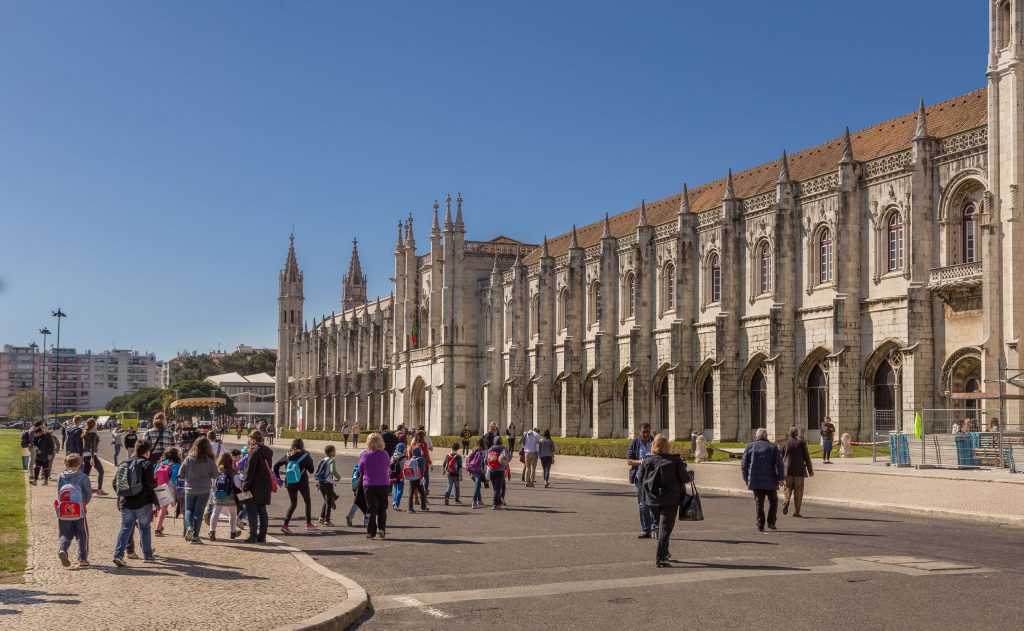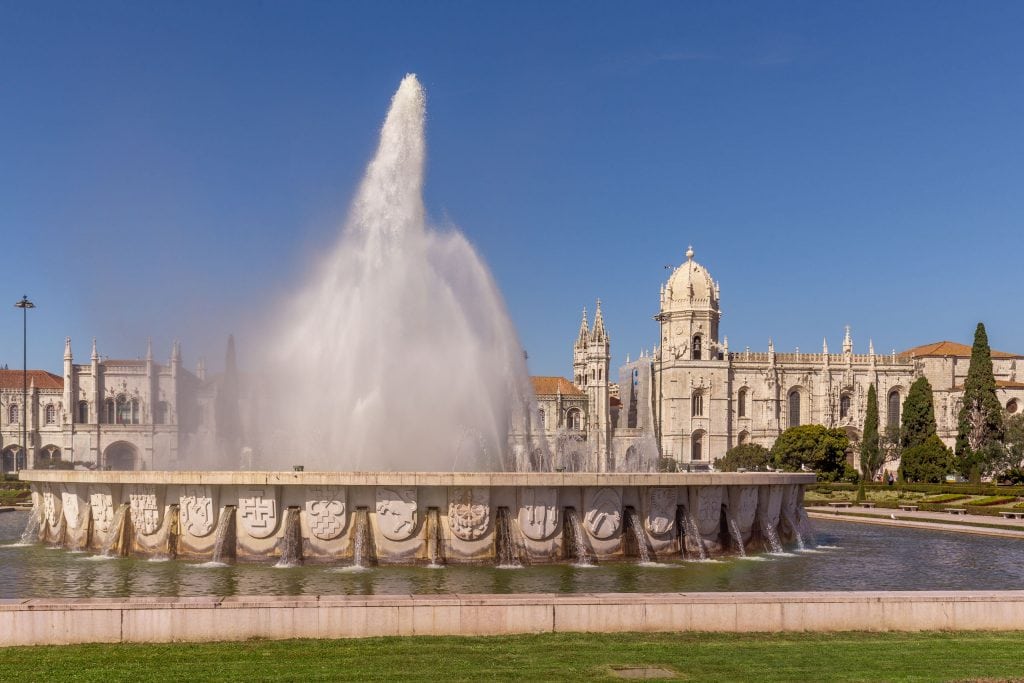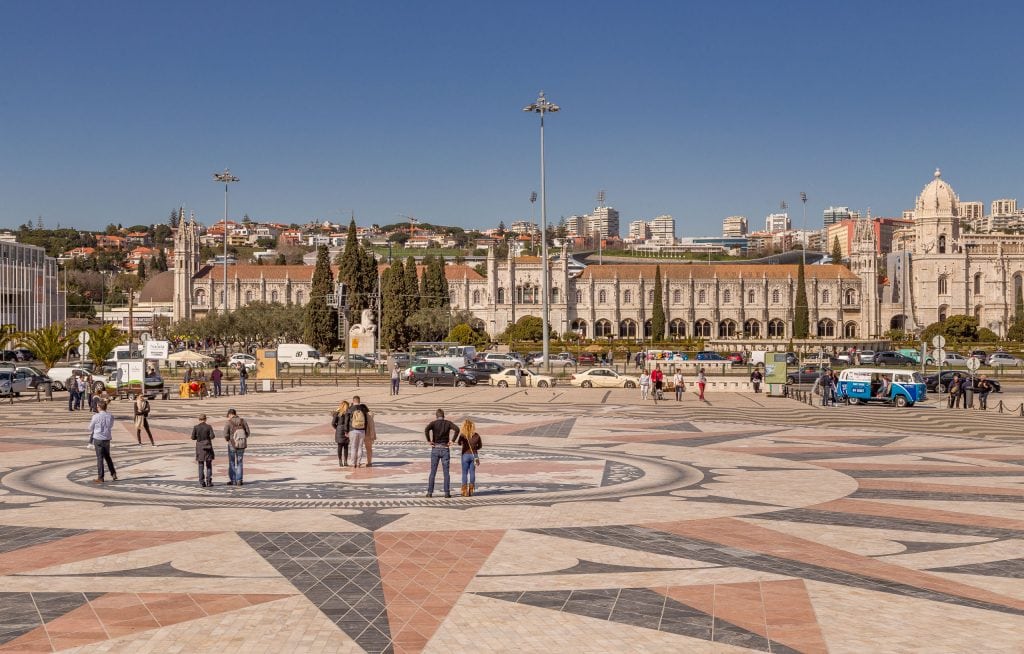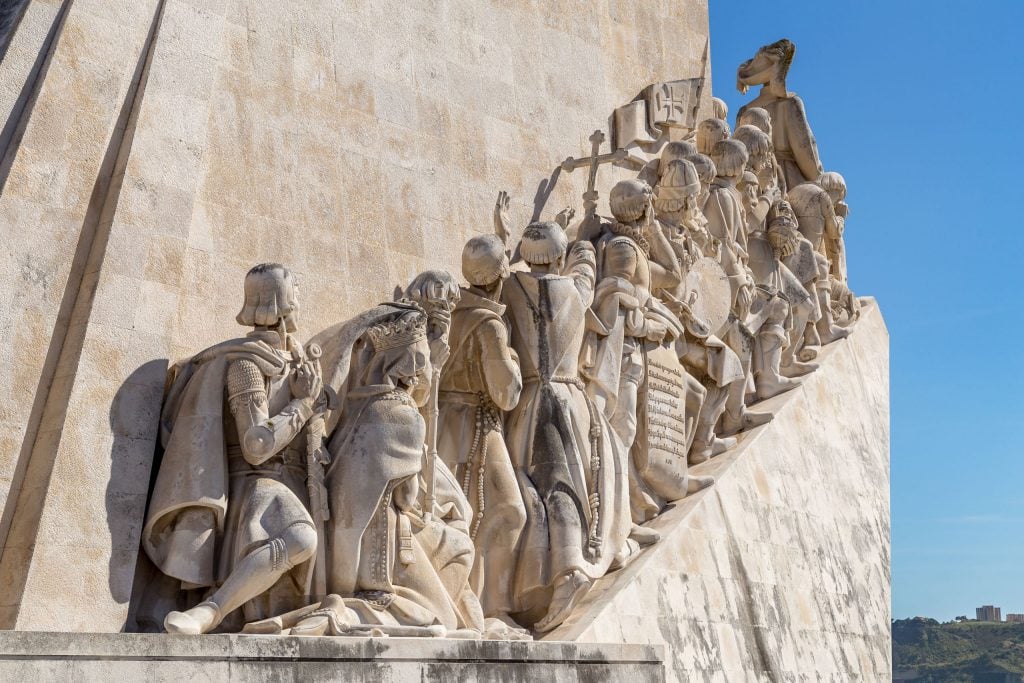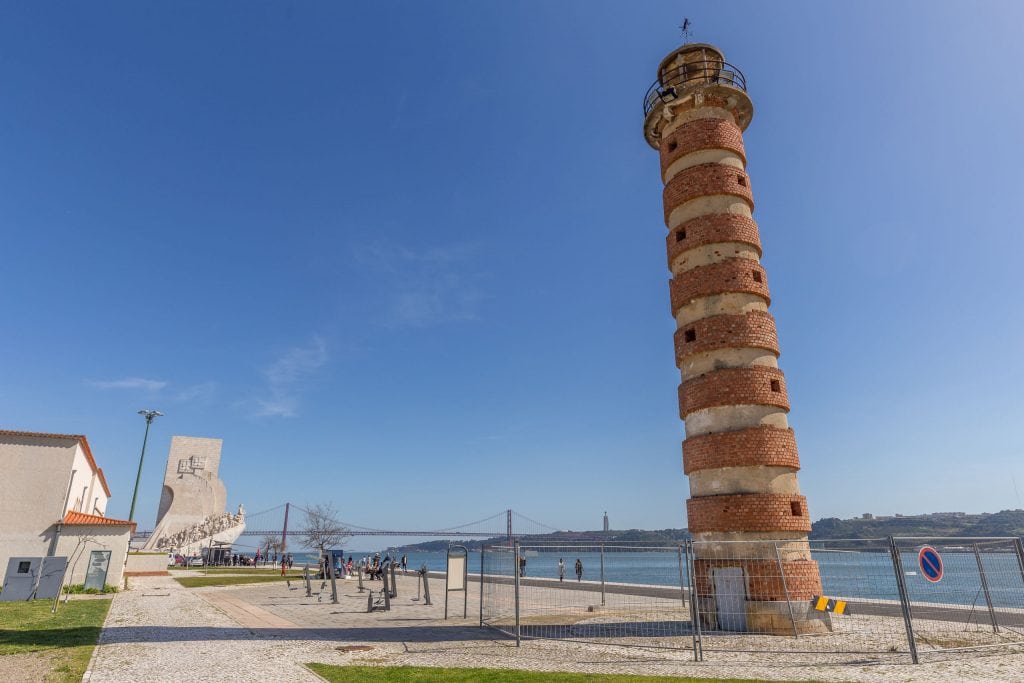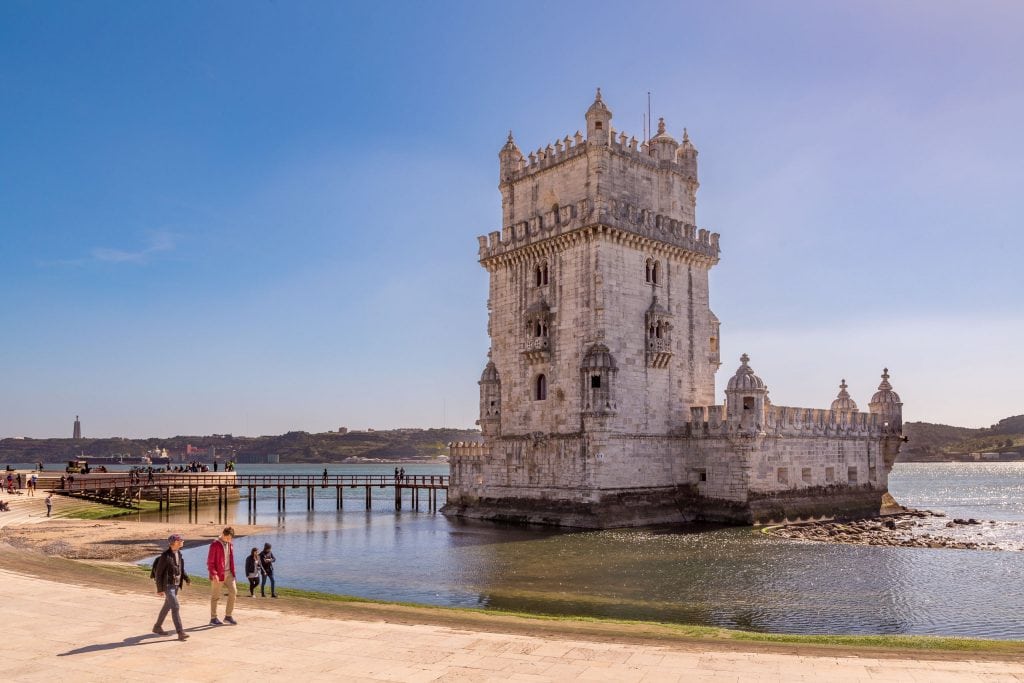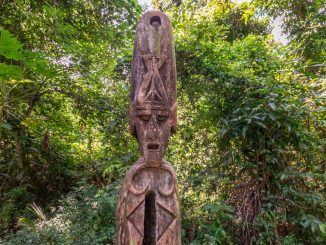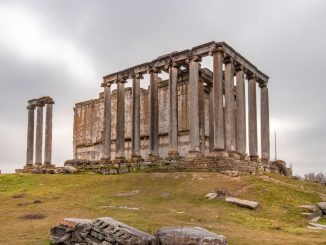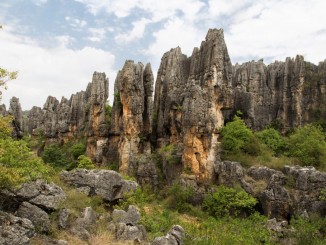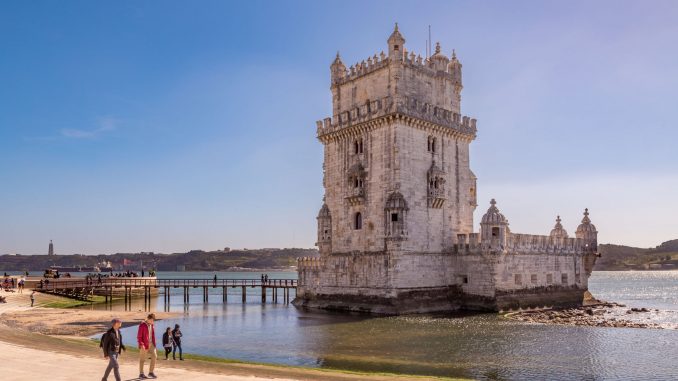
Table of Contents
Belém is a neighborhood in western Lisbon at the mouth of the Tagus River. It’s history dates back to prehistoric times but it was in the Middle Ages that its most famous landmarks were constructed. These are the Jerónimos Monastery and Tower of Belém, both a UNESCO World Heritage Site. I show you around the must-see places in Belém including the coach museum and I take you to the famous Pastéis de Belém. Enjoy this day trip from within Lisbon which is a must do on any Portugal itinerary!
Belém Tower
It’s best to start the day at the Belém Tower as you will be around lunch time then at the place to eat the best Pastéis de Belém. These didn’t exist yet when Belém became more and more important in the Middle Ages. The expansion started when Afonso I of Portugal (born in the city of Guimarães which I visited earlier) formed the Kingdom of Portugal. During the Age of Discovery (15-16th century) it quickly developed into an agricultural, seafaring and trading area. This development didn’t stay unnoticed and a defense system was needed which resulted in the plan to build a defense tower near the mouth of the Tagus River, today known as the Tower of Belém.
PORTUGAL – Lisbon to Porto: The perfect Portugal itinerary for 7-10 days
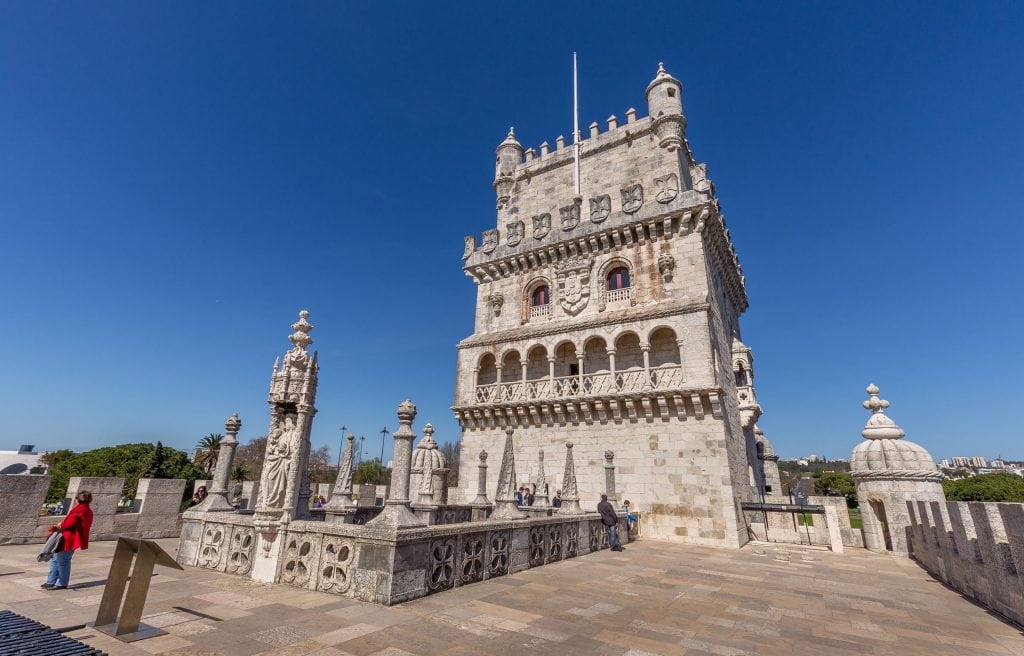
Belém architecture
The Tower of Belém was constructed in the early 16th century with the same bricks used for the nearby monastery. Its location was strategically chosen just off the shore of the Tagus River on a rocky island. Unfortunately, it wasn’t always strong enough and lost battles too. It was used as a prison but also as a tax office for arriving vessels. The tower consists of a hexagonal bastion with a three-story tower on top. Along the terrace there are several small turrets. Its style is mainly Manueline with some Moorish influences.
Interior visit
The interior of the bastion is an arched room and the tower has three floors. The climb to the top floor is worth it as there is a small exhibition. For the rest, it’s a bit empty but the entrance ticket is also valid for the nearby cloister so no money wasted. I explored the Tower of Belém within an hour and continued to the Monument to the Discoveries just upstream the river.
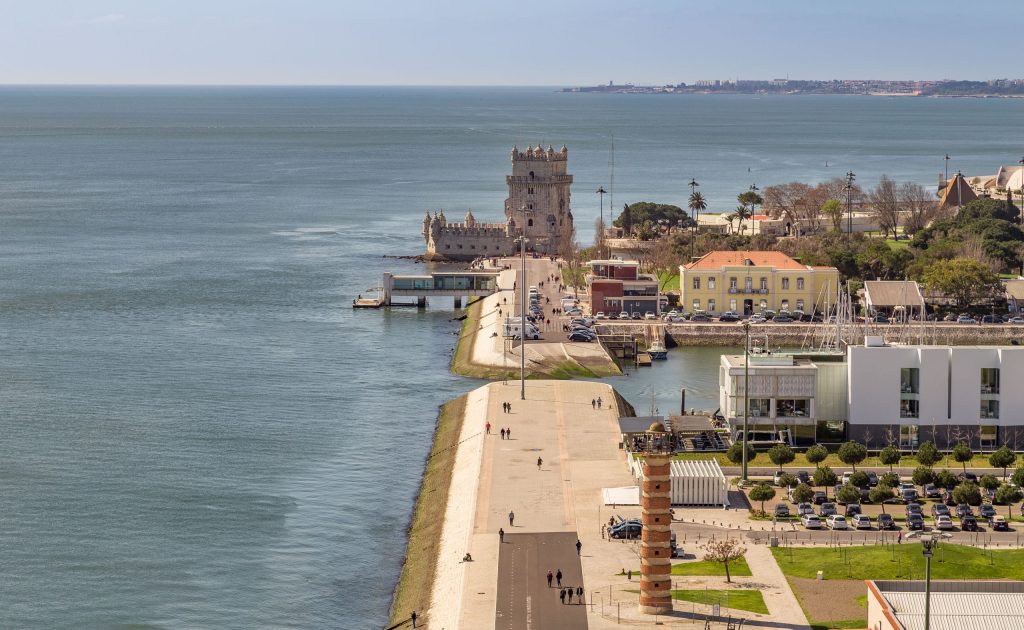
Monument to the Discoveries
The Monument to the Age of discoveries was completed in the fifth centennial year of the death of Henry the Navigator. Henry the Navigator, born in Porto, was one of the most important persons that contributed to the Age of Discovery (15-16th century). A statue of him is at the front of the monument overlooking the Tagus River. On both sides of the monument are all the important explorers carved in stone. These include Vasco de Gama who discovered the sea route to India, Pedro Alvarez Cabral who discovered Brazil and Ferdinand Magellan who first sailed across the globe. The design of the monument is like the front of a ship seen in early Portuguese ship designs.
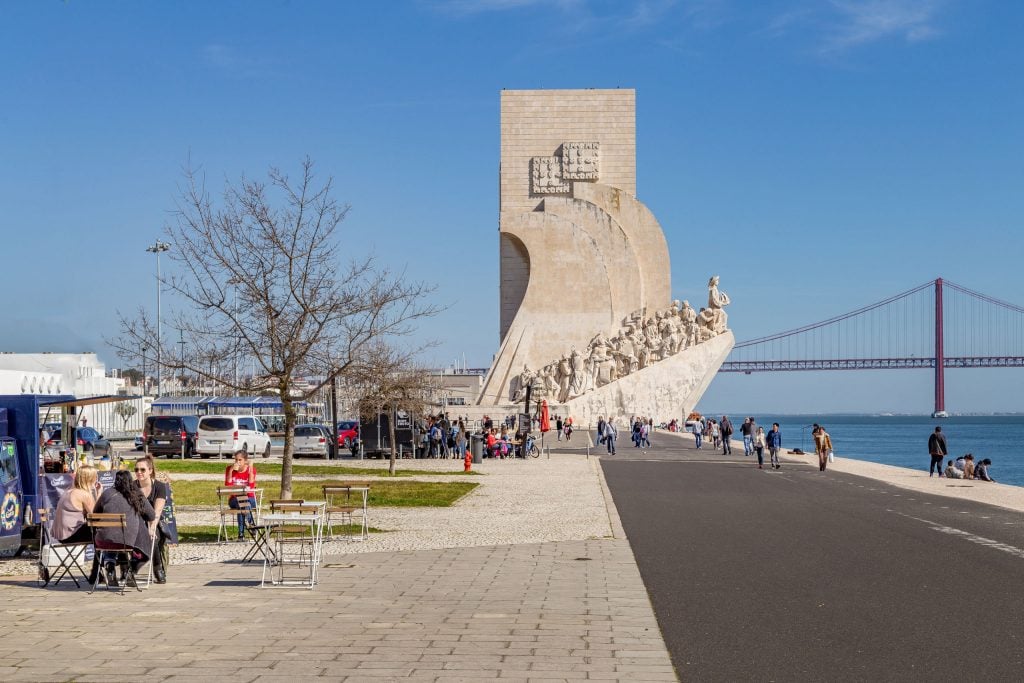
The monument is located just upstream from the Tower of Belém opposite the Jerónimos Monastery. I suggest to buy a ticket to go to the top for a nice view on the Tower of Belém and the 25th April Bridge on the other side. There is also an exposition inside of the maritime history of Portugal. I finished quickly as it’s not big and walked over the square in front which is decorated with a compass rose and a world map in the middle.
PORTUGAL – Lisbon to Porto: The perfect Portugal itinerary for 7-10 days

Jerónimos Monastery in Belém
I walked from the Monument to the Discoveries first through the garden towards the Jerónimos Monastery which is the highlight of today! If you started your day late and if it’s almost lunch time I suggest to go now to try the Pastéis de Belém first (read all about them in my top 6 hotspots in Lisbon for lunch and dinner). I decided to visit the Jerónimos Monastery first as it would be a quieter time for lunch; it gets crowded there. If you walk toward the monastery you will see the church on the right-hand side with behind it the cloister. On the left are the annex buildings which were completed later and hold now various exhibitions.
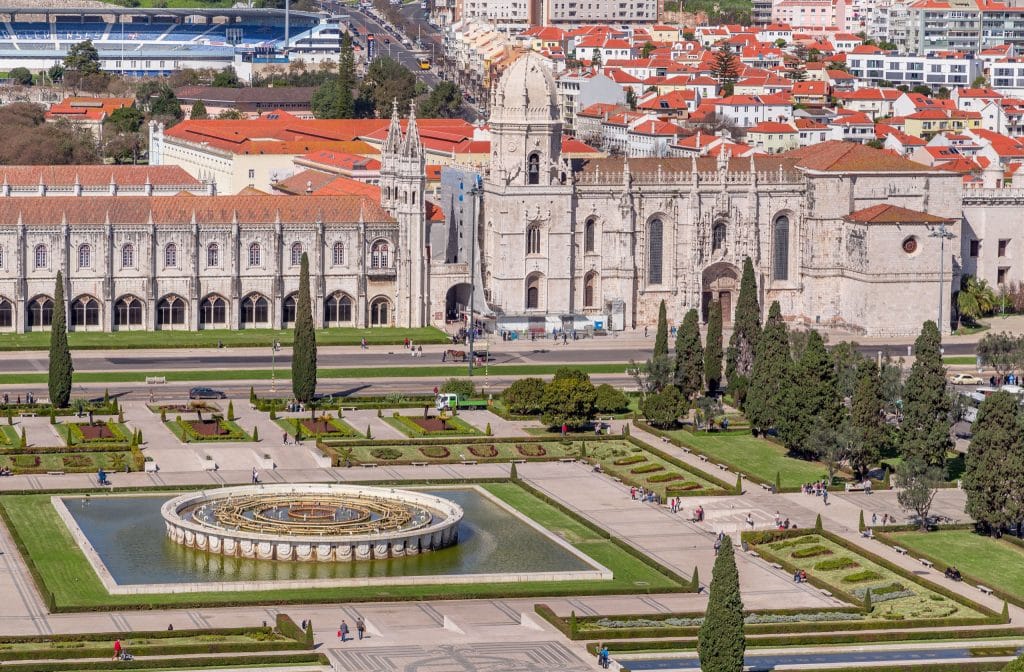
The Architecture
The complex is predominated by a Manueline style with hints from Renaissance and Classic styles. Once you arrive at the complex you must have a look at the beautiful Manueline south portal first. Its decoration is magnificent with a statue of Henri the Navigator above the door and at the top a Madonna statue. All statues are covered by small roofs (gables) and have spires on top (pinnacles). Interesting fact: although it’s the most beautiful entrance of the Church of Santa Mario, part of the Jerónimos Monastery, it’s not the main entrance. Time to go inside!
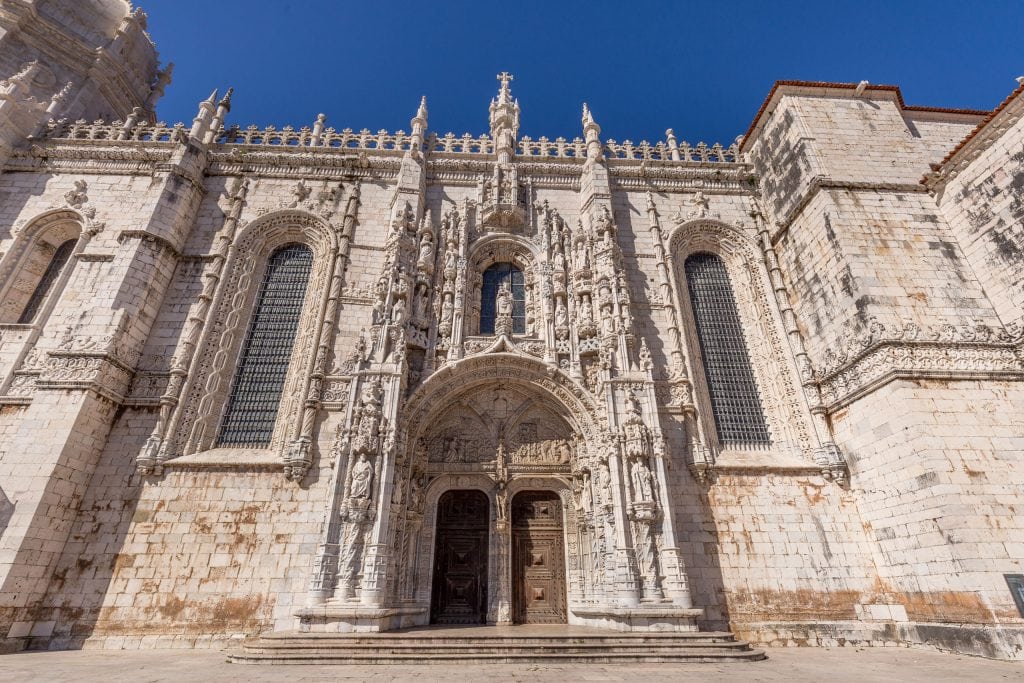
Interior visit – the church
The entrance portal is as beautiful with statues of kings, queens, angels and patrons. Beautiful decorated but much smaller. Once inside you will notice the beautiful decorated hectagonal columns supporting the roof. The altar, choir but also the tomb of Vasco da Gama and the royal tombs are all designed in Manueline style. I especially like the royal tombs with the two elephants holding the tombs (see photo in gallery). Don’t forget to have a look at the many stained-glass windows; did you see Saint Jerome in one of them? I think I explored the church for at least an hour; it has so much decoration that I couldn’t walk through it in a rush. In the gallery, you can see more photos but lets check out the monastery first.
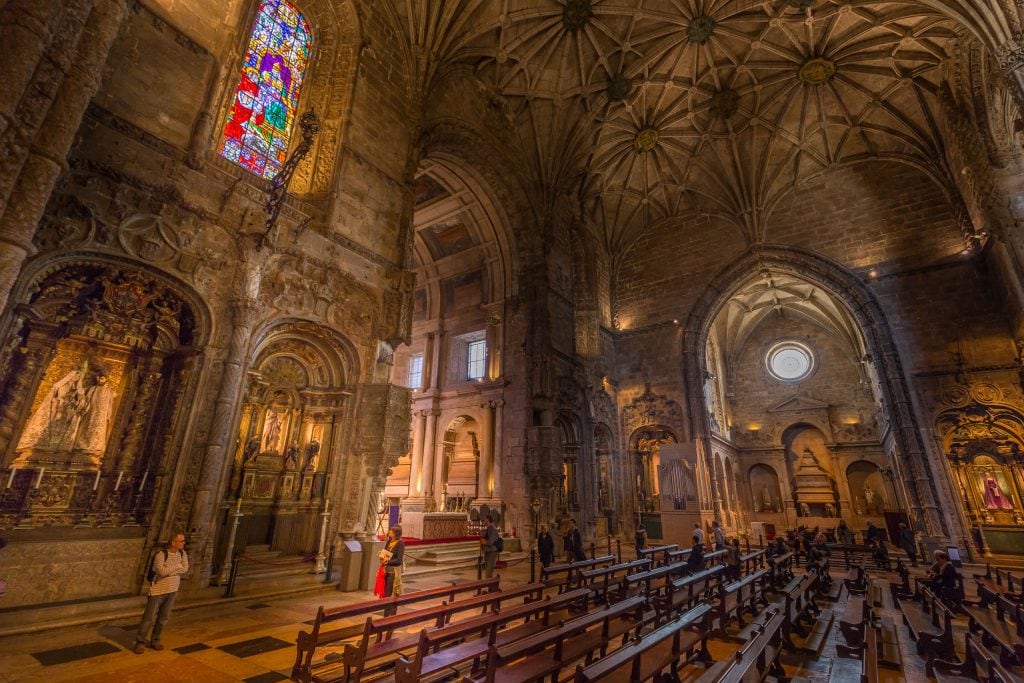
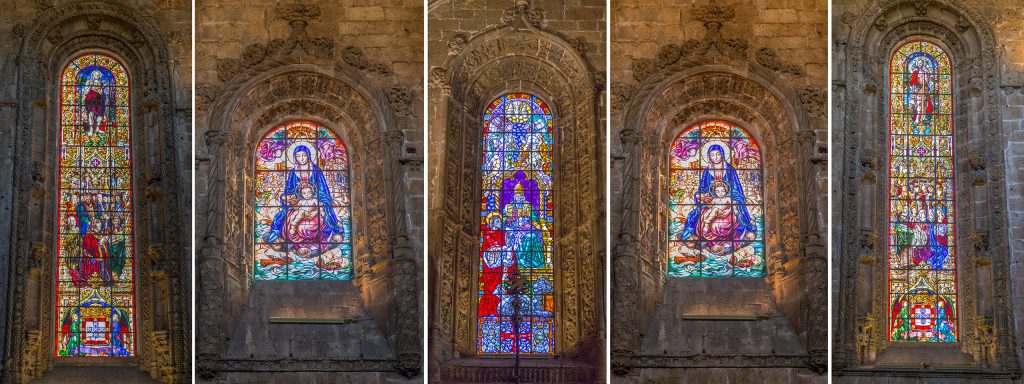
Interior visit – the monastery
At the monastery, you will notice also some Renaissance styles but the inside is predominated by magnificent Manueline decorations. The monastery has a standard square layout and two floors of which the upper floor is a bit less deep. Beautiful arches separate the hallway with the inner courtyard. If you walk around the monastery you’ll see several tombs and a chapter house. In the refectory you’ll notice the blue tiles which are common all over Portugal. I love them as they give each place a unique feeling. The monastery doesn’t take that much time to explore and I finished quite quick after which I continued to the Coach Museum.
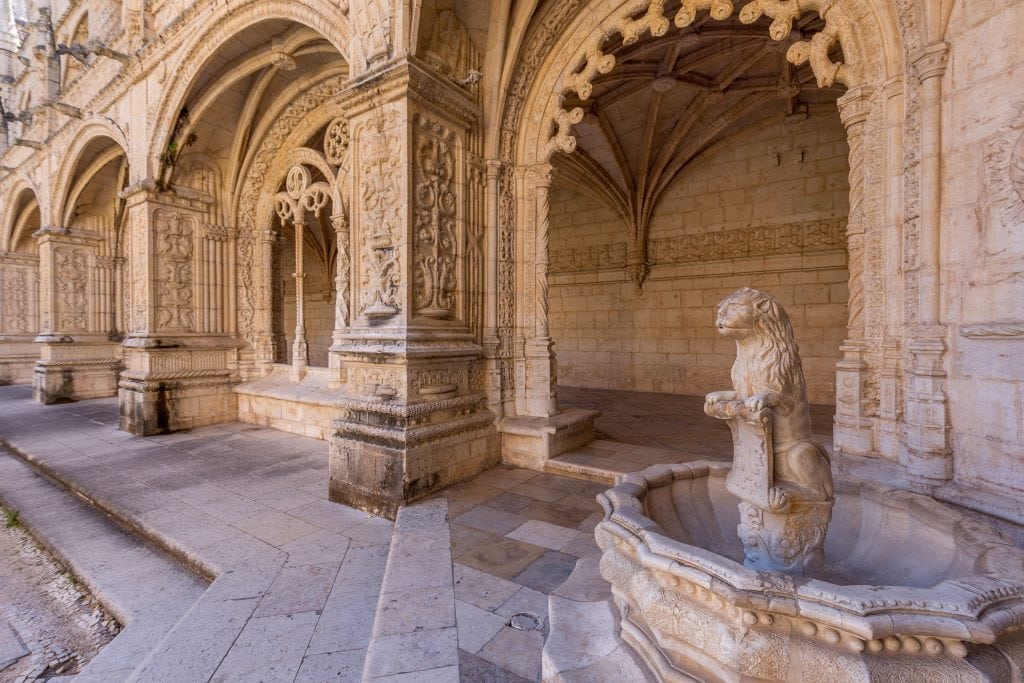
National Coach Museum
The National Coach Museum is one of the more famous museums of its type in the world. The collection of carriages is outstanding with many century old carriages from Portuguese royal and noble families. The entrance was quite cheap; I don’t remember but I also finished quite quickly. I like to visit such museums, like in Vienna at the Schonbrunn Castle, but I don’t have to stare hours at each carriage. I finished early afternoon and went back to the Intercontinental Hotel Lisbon to relax a bit and enjoy the club lounge with evening cocktails. They have great champagne!
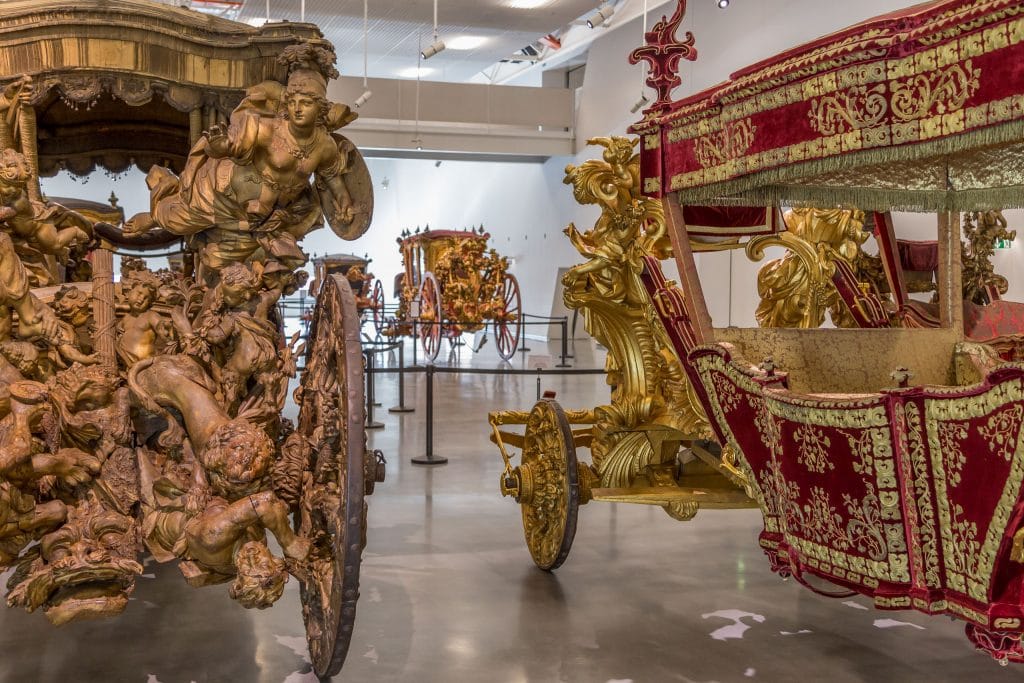
More things to do in Belém
If you like botanical gardens, then you could visit the botanical garden in Belém. I had read some reviews online and it didn’t seem to be the best one in the world so that’s why I skipped. Further, I already saw the Singapore Botanical Garden and the Bogor Botanical Garden in Indonesia this year. They are amongst the most famous in the world. Don’t forget to have a look at the statue of Afonso de Albuquerque in front of the Presidential Palace; you can’t miss it. For the rest just enjoy strolling around and enjoy one of the many terraces you’ll come across. It’s a beautiful area to visit as a day trip from Lisbon.
Check my 6 hotspots in Lisbon for lunch and dinner to see where to go for dinner after a long day of sightseeing. Also, read my other articles about Portugal if you are staying longer.
Stay tuned for more stories and subscribe to the newsletter or follow CTB on social media (Facebook, Twitter, Instagram including Instagram stories; on all social media you can find CTB @christravelblog) to get updated information.
Did you visit Belém too or do you have questions? Please leave a comment at the bottom of the page. Love to hear from you!
Gallery Belém
Click an image for a full screen gallery of more photos taken during this trip. If you like to use any photo for commercial, private or editorial use please contact first for permission and/or pricing.


